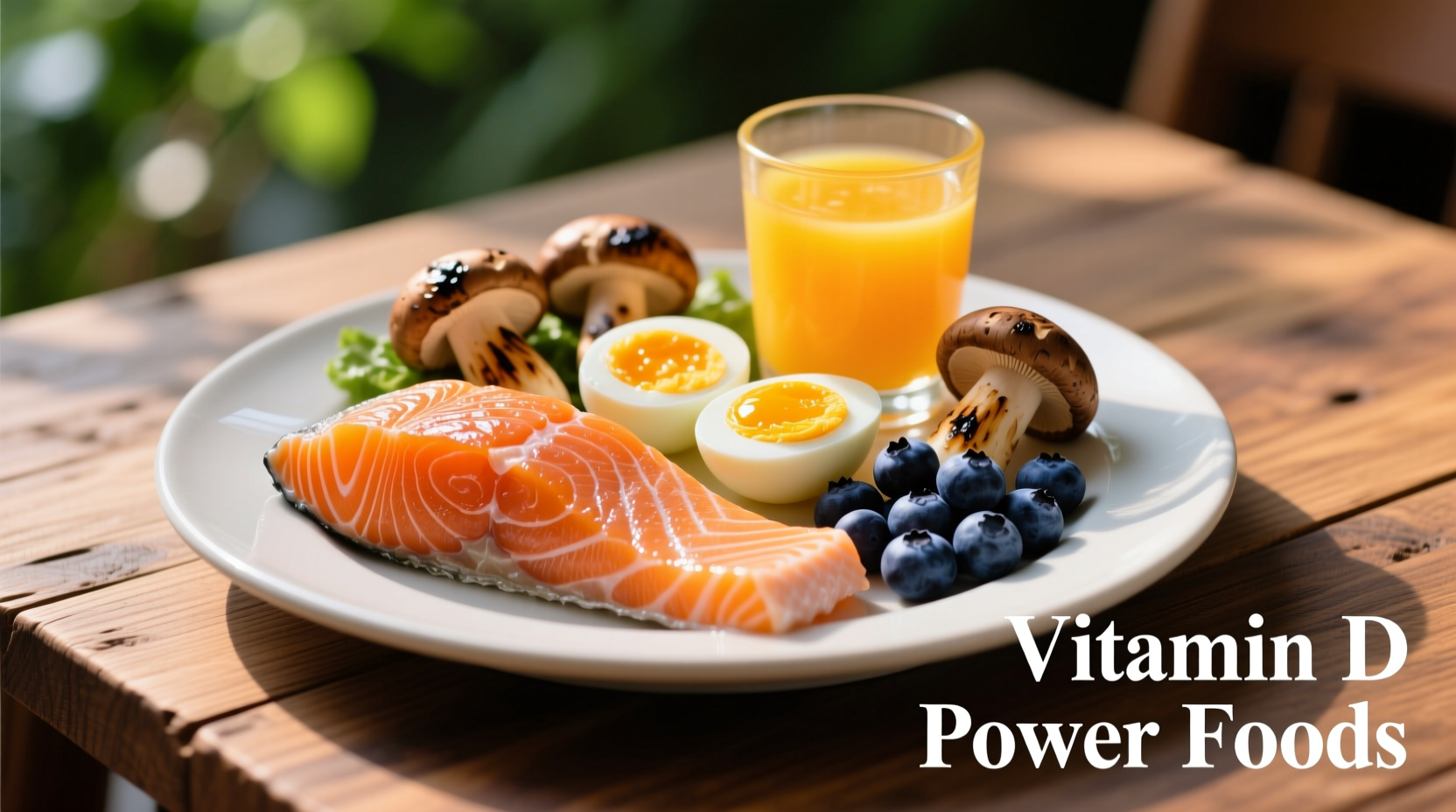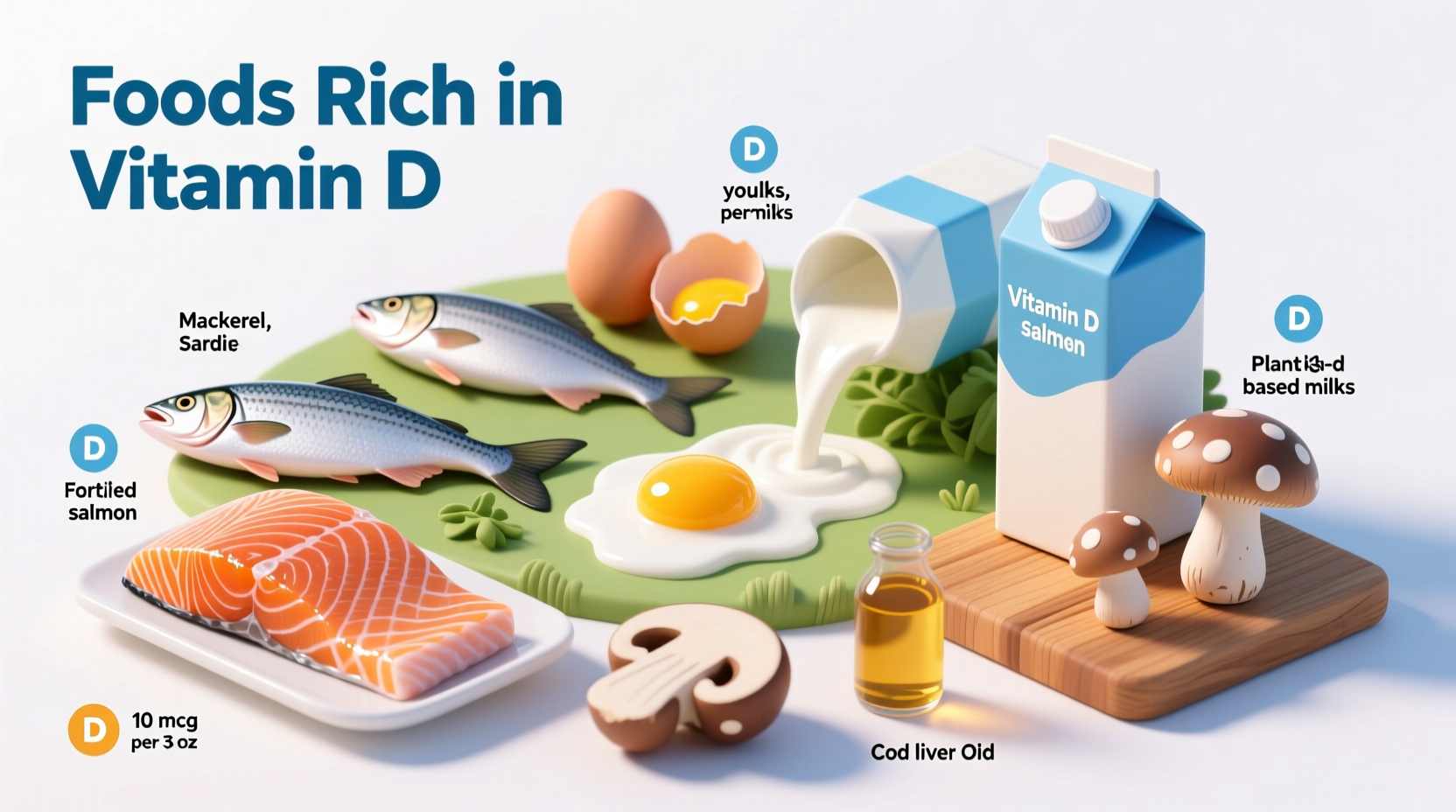The top natural food sources of vitamin D include fatty fish like salmon (447 IU per 3-ounce serving), mackerel (306 IU), and sardines (164 IU). Fortified foods provide significant amounts too: fortified milk (115-130 IU per cup), fortified orange juice (100 IU), and fortified cereals (40-100 IU). Egg yolks (44 IU) and UV-exposed mushrooms (up to 2,300 IU) complete the most accessible dietary sources for maintaining healthy vitamin D levels.
If you've ever wondered what food has vitamin d, you're not alone. Vitamin D deficiency affects nearly 1 billion people worldwide according to the National Institutes of Health. This essential nutrient plays a critical role in calcium absorption, bone health, immune function, and inflammation reduction. While sunlight exposure triggers vitamin D production in your skin, dietary sources become crucial during winter months, for people with darker skin tones, or those living at higher latitudes.
Why Dietary Vitamin D Matters More Than You Think
Many people don't realize that few foods naturally contain significant vitamin D. The Vitamin D Council reports that approximately 90% of Americans don't meet recommended daily intake through diet alone. This gap becomes particularly problematic for individuals with limited sun exposure, older adults whose skin is less efficient at synthesizing vitamin D, and people following vegan diets.

Natural Vitamin D Powerhouses: What Food Has Vitamin D
Fatty fish represent the most potent natural sources of vitamin D3 (cholecalciferol), the form most effectively utilized by the human body. Understanding the concentration differences between sources helps optimize your dietary planning.
| Food Source | Serving Size | Vitamin D (IU) | % Daily Value* |
|---|---|---|---|
| Wild-caught salmon | 3 ounces | 600-1,000 | 75-125% |
| Farmed salmon | 3 ounces | 100-250 | 12-31% |
| Mackerel | 3 ounces | 306 | 38% |
| Sardines (canned) | 3 ounces | 164 | 21% |
| Egg yolk | 1 large | 44 | 6% |
| UV-exposed mushrooms | 3 ounces | 400-2,300 | 50-288% |
*Based on 800 IU daily value recommendation from NIH. Values vary based on preparation and source.
Fortified Foods: Your Everyday Vitamin D Boosters
Since natural vitamin D sources remain limited, food fortification has become essential for public health. The United States began fortifying milk with vitamin D in the 1930s to combat rickets, a childhood bone disease. Today, many common foods receive this nutritional enhancement:
- Milk (cow's and plant-based alternatives): 100-130 IU per cup
- Orange juice: 100 IU per cup (check labels as fortification varies)
- Cereals: 40-100 IU per serving
- Yogurt: 80-100 IU per 6-ounce container
- Some tofu products: Up to 120 IU per ½ cup
The Centers for Disease Control and Prevention notes that fortified foods now provide approximately 60% of dietary vitamin D intake for Americans. When selecting fortified products, check nutrition labels carefully as amounts vary significantly between brands.
Maximizing Vitamin D Absorption From Food
Simply consuming vitamin D-rich foods isn't enough—your body needs the right conditions to absorb this fat-soluble vitamin effectively. Research published in the American Journal of Clinical Nutrition demonstrates that consuming vitamin D with dietary fat increases absorption by up to 32%.
Try these practical absorption-boosting strategies:
- Add a healthy fat source like avocado or olive oil to vitamin D-rich salads
- Choose full-fat dairy products over non-fat versions when consuming fortified milk
- Pair egg dishes with avocado or cheese for better nutrient uptake
- Cook mushrooms with a small amount of oil to enhance vitamin D bioavailability
Vitamin D Considerations for Special Diets
Different dietary patterns require tailored approaches to vitamin D intake:
Vegan and Vegetarian Sources
While limited, plant-based options exist. UV-exposed mushrooms represent the only natural non-animal source. Look for brands specifically labeled as UV-treated, as regular mushrooms contain minimal vitamin D. Fortified plant milks and cereals provide reliable alternatives, but check labels as fortification isn't universal.
Seasonal Availability Factors
Vitamin D content in foods varies seasonally. Wild salmon caught in summer months contains up to 30% more vitamin D than winter-caught fish. Similarly, mushrooms exposed to summer sunlight develop higher vitamin D concentrations. The USDA FoodData Central database shows these seasonal fluctuations can significantly impact your dietary intake throughout the year.
Common Vitamin D Food Myths Debunked
Several misconceptions persist about vitamin D food sources. Let's clarify the facts:
- Myth: All mushrooms contain vitamin D
Fact: Only mushrooms exposed to UV light develop significant vitamin D; regular store-bought mushrooms contain minimal amounts - Myth: Butter and cheese are good vitamin D sources
Fact: These contain only trace amounts (about 6 IU per tablespoon of butter) and shouldn't be relied upon for vitamin D intake - Myth: Vitamin D in fortified foods equals natural sources
Fact: Fortified foods typically contain vitamin D2 (ergocalciferol), which is less effective than the D3 found in animal sources
Putting Vitamin D Foods Into Practice
Creating a vitamin D-rich diet doesn't require drastic changes. Try these simple meal ideas:
- Breakfast: Fortified cereal with fortified plant milk and sliced banana
- Lunch: Salmon salad sandwich on whole grain bread with avocado
- Dinner: Grilled mackerel with roasted UV-exposed mushrooms and quinoa
- Snack: Fortified yogurt with berries and chia seeds
Remember that consistency matters more than perfection. Incorporating just two vitamin D-rich foods daily can significantly improve your status. The Endocrine Society recommends adults consume 600-800 IU daily, with higher amounts for those with documented deficiency.
When Food Isn't Enough: Recognizing Limitations
Dietary sources alone may not suffice for everyone. Certain factors create higher vitamin D needs:
- People over 70 produce less vitamin D from sunlight
- Individuals with darker skin require longer sun exposure
- Those with obesity may need up to 2-3 times more vitamin D
- People with malabsorption conditions (Crohn's, celiac)
If you experience persistent fatigue, bone pain, or muscle weakness, consult your healthcare provider about testing your vitamin D levels. The National Health and Nutrition Examination Survey indicates that 35% of U.S. adults have insufficient levels despite available dietary sources.











 浙公网安备
33010002000092号
浙公网安备
33010002000092号 浙B2-20120091-4
浙B2-20120091-4